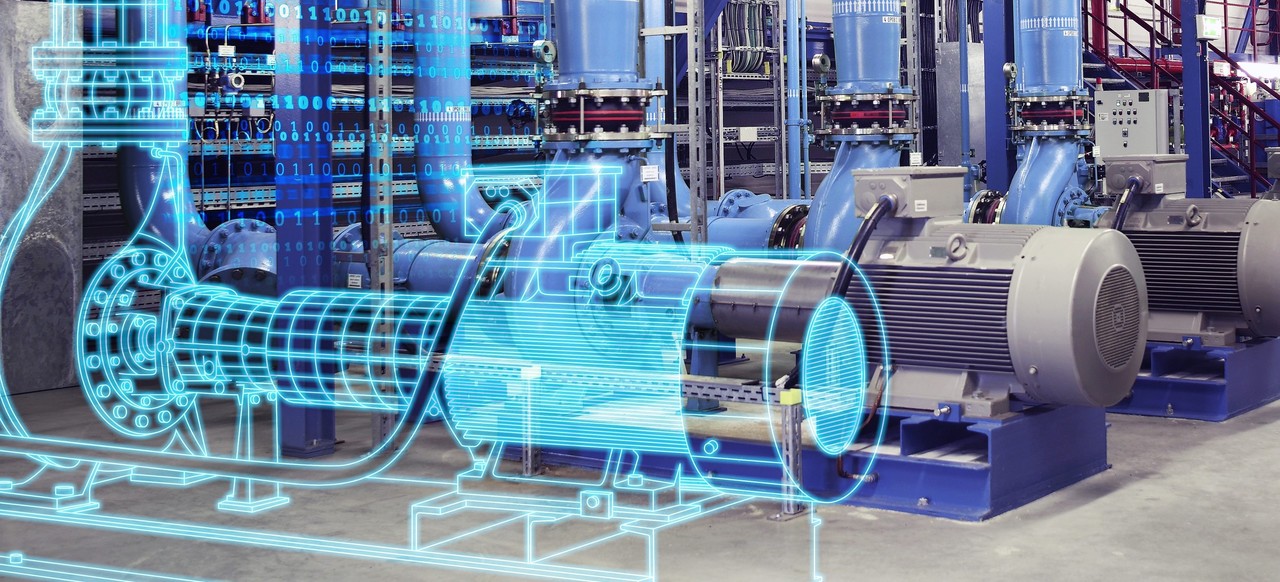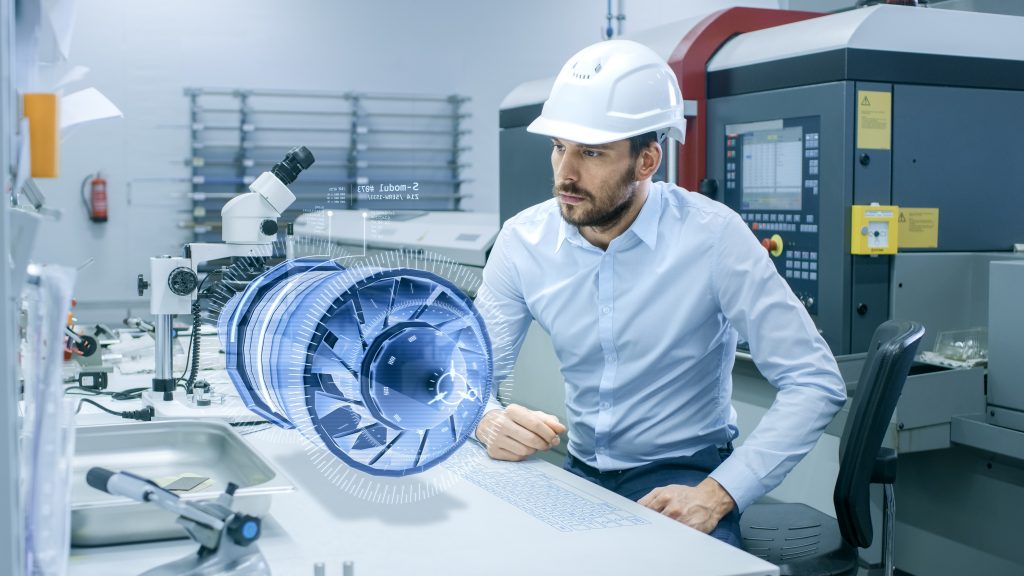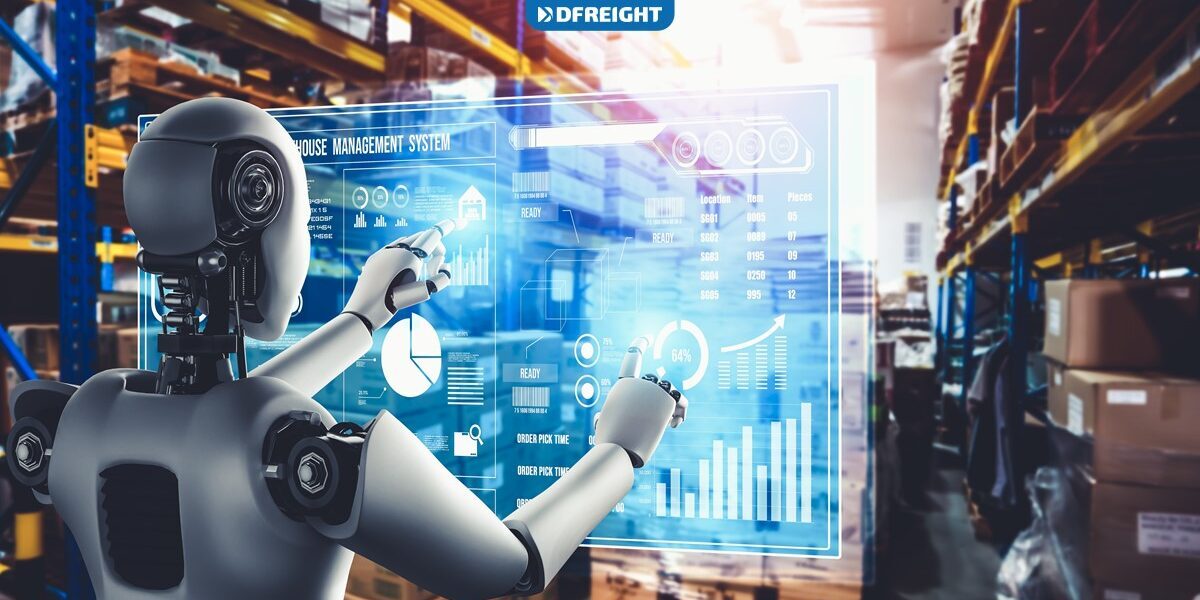

Digital Twins: Transforming Construction
Digital twins are revolutionizing the construction industry, offering a virtual representation of physical structures and processes. The integration of these digital replicas enhances efficiency, collaboration, and decision-making throughout the construction lifecycle.
1. Virtual Representation of Real Structures
Digital twins create a virtual counterpart of physical assets, enabling a comprehensive understanding of construction projects. Through advanced simulations and modeling, stakeholders gain insights into the structure’s behavior, performance, and potential challenges, facilitating informed decision-making.
2. Improved Design and Planning
Incorporating digital twins in construction enhances the design and planning phases. Architects and engineers utilize these virtual models to test designs, analyze structural integrity, and assess various scenarios, ensuring optimized designs and efficient planning before physical construction begins.
3. Real-Time Monitoring and Management
During the construction phase, digital twins enable real-time monitoring of progress and performance. IoT sensors and data analytics incorporated into these digital replicas provide live updates on construction activities, allowing for timely adjustments, risk mitigation, and resource allocation.
4. Enhancing Collaboration and Communication
Digital twins foster collaboration among project stakeholders. By providing a shared platform for real-time data and visual representations, they facilitate effective communication and collaboration among architects, engineers, contractors, and clients, streamlining decision-making processes.
5. Predictive Maintenance and Lifecycle Management
Post-construction, digital twins continue to add value by enabling predictive maintenance and lifecycle management. The digital replica serves as a valuable tool for ongoing maintenance, enabling proactive identification of potential issues and efficient management of the structure’s lifecycle.
The adoption of digital twins in construction marks a paradigm shift in the industry, transforming traditional practices into data-driven, collaborative, and efficient processes. As technology evolves, the potential for digital twins to optimize construction projects and ensure long-term sustainability continues to grow.
For a comprehensive exploration of Digital Twins in Construction and their transformative impact, visit Digital Twins in Construction to discover how these digital replicas are revolutionizing the construction industry, enhancing project efficiency, and driving innovation.


5G in Industrial Automation: Transformative Connectivity
5G technology is revolutionizing industrial automation, ushering in an era of enhanced connectivity, efficiency, and innovation across various sectors.
Understanding 5G in Industrial Automation
5G networks offer ultra-fast, low-latency connectivity, vital for real-time communication in industrial automation. This technology enables seamless connectivity between machines, devices, and systems, transforming industrial processes.
As industries embrace the potential of 5G, platforms like 5G in Industrial Automation serve as hubs, highlighting the evolution and impact of this connectivity in industrial settings.
Enhanced Connectivity and Speed
5G’s high bandwidth and low latency enable faster communication and data transfer between machines. This improved connectivity optimizes industrial processes, reducing delays and enhancing productivity.
IoT Integration and Network Slicing
5G facilitates the integration of Internet of Things (IoT) devices in industrial settings. Network slicing allows the creation of dedicated, customized virtual networks, ensuring efficient utilization of network resources for specific industrial needs.
Remote Monitoring and Control
With 5G, industries can remotely monitor and control machinery and processes in real-time. This capability enhances flexibility, allowing for immediate adjustments and interventions, even from distant locations.
Precision Manufacturing and Robotics
5G’s high-speed, low-latency connectivity enables precise control in manufacturing processes. Robotics and automated systems benefit from this precision, optimizing production efficiency and quality.
Safety and Predictive Maintenance
5G supports advanced safety measures and predictive maintenance in industrial settings. Real-time data transmission aids in early detection of potential issues, preventing downtime and ensuring operational safety.
As industries adapt to 5G connectivity, 5G in Industrial Automation platforms provide insights into the integration and impact of 5G technology in industrial automation processes.
Augmented Reality and Training
5G facilitates augmented reality (AR) applications for training and maintenance purposes in industrial environments. AR technology supported by high-speed connectivity enhances training modules and maintenance procedures.
Energy Efficiency and Sustainability
The efficiency of 5G networks contributes to energy conservation in industrial operations. Optimized processes, predictive maintenance, and improved resource allocation lead to sustainable and eco-friendly practices.
Challenges and Adoption
Adopting 5G in industrial automation faces challenges such as infrastructure development, security concerns, and integration complexities. Overcoming these challenges requires collaborative efforts and robust solutions.
Future Prospects and Innovation
The integration of 5G in industrial automation sets the stage for future innovations. Advancements in robotics, AI, and IoT, powered by 5G connectivity, promise transformative advancements in industrial processes.
Exploring platforms like 5G in Industrial Automation unveils the transformative potential of 5G technology in revolutionizing industrial automation, fostering a future of enhanced connectivity and efficiency.

Absolutely, here’s the article:
Industry 4.0: Digital Twins
Introduction to Digital Twins in Industry 4.0
Digital twins represent a revolutionary concept within Industry 4.0, enabling the creation of virtual replicas of physical assets, processes, and systems. These virtual counterparts simulate real-world scenarios, providing insights, predictions, and optimizing operations across various industries.
Digital Twin Technology and Implementation
Digital twin technology relies on sophisticated sensors, IoT devices, and data analytics. By integrating these technologies, organizations can create accurate, real-time models of physical assets. Implementing digital twins aids in predictive maintenance, process optimization, and product development.
Applications in Manufacturing and Production
In manufacturing, digital twins revolutionize processes. They facilitate predictive maintenance by monitoring equipment conditions and predicting failures before they occur. Additionally, they optimize production by analyzing workflows and suggesting improvements to increase efficiency.
Role in Product Development and Prototyping
Digital twins play a crucial role in product development. They allow for virtual prototyping and testing, reducing the need for physical prototypes, thereby saving time and costs. Engineers can simulate product behavior and make adjustments before physical production.
Integration in Smart Cities and Infrastructure
Digital twins extend beyond manufacturing, finding applications in smart cities and infrastructure. They simulate urban environments, aiding in city planning, traffic management, and infrastructure development. They provide insights to optimize resource allocation and enhance overall city functionality.
Challenges and Future Trends
While digital twins offer immense benefits, challenges exist. These include data security, interoperability, and scaling models for complex systems. However, ongoing advancements in AI, IoT, and data analytics aim to address these challenges, paving the way for more robust digital twins.
Digital Twins in Industry 4.0 are revolutionizing how industries operate. To explore the depth of this technology and understand its transformative potential, visit Digital Twins in Industry 4.0 for comprehensive insights.
Feel free to modify or expand upon this article as needed!


Revolutionizing Manufacturing: The Era of Digital Twins
In the dynamic landscape of modern manufacturing, the advent of digital twins has brought about a transformative shift. This technology, which creates virtual replicas of physical systems, is reshaping the way products are designed, produced, and maintained. Let’s delve into the impact of digital twins on the manufacturing industry.
The Essence of Digital Twins
Digital twins are virtual representations of physical objects or systems, meticulously designed to mirror their real-world counterparts. In manufacturing, this technology extends beyond simple 3D models. It involves the integration of real-time data, sensors, and advanced analytics to create a dynamic and responsive virtual replica of a physical asset.
Designing for Success: Digital Twin in the Product Lifecycle
One of the primary applications of digital twins in manufacturing is in product design. By creating a digital twin early in the design phase, manufacturers gain insights into how a product will perform in the real world. This not only enhances design accuracy but also allows for proactive adjustments, reducing the likelihood of costly errors later in the production process.
Optimizing Production Processes
Digital twins play a pivotal role in optimizing manufacturing processes. By simulating the entire production line, manufacturers can identify inefficiencies, streamline workflows, and enhance overall operational efficiency. Real-time data from sensors on the physical equipment is mirrored in the digital twin, providing a comprehensive view for continuous improvement.
Predictive Maintenance for Enhanced Reliability
Incorporating digital twins into manufacturing enables predictive maintenance strategies. By continuously monitoring the performance of physical assets through sensors, digital twins can predict when equipment is likely to fail. This foresight allows manufacturers to schedule maintenance activities proactively, minimizing downtime and reducing overall maintenance costs.
NeverEmpty’s Cutting-Edge Digital Twin Solutions
In the realm of digital twins in manufacturing, NeverEmpty stands out as a provider of cutting-edge solutions. NeverEmpty’s digital twin technology goes beyond traditional applications, offering a comprehensive suite of tools for design optimization, process simulation, and predictive maintenance.
Explore NeverEmpty’s Digital Twins in Manufacturing solutions here.
Enhancing Collaboration and Communication
Digital twins facilitate enhanced collaboration among teams involved in the manufacturing process. Designers, engineers, and production managers can work collaboratively within the digital twin environment, fostering better communication and synergy. This collaborative approach results in faster decision-making and more agile responses to challenges.
Real-Time Monitoring and Analytics
The integration of real-time data into digital twins allows for continuous monitoring of manufacturing processes. This data-driven approach provides valuable insights into performance metrics, quality control, and resource utilization. Manufacturers can leverage analytics derived from the digital twin to make data-driven decisions that optimize efficiency and output quality.
Supply Chain Optimization
Digital twins extend their influence beyond the factory floor, impacting supply chain management. Manufacturers can create virtual replicas of their supply chain networks, enabling better visibility and control. This enhanced oversight facilitates more accurate demand forecasting, inventory management, and logistics planning, ultimately reducing costs and improving overall supply chain resilience.
Addressing Sustainability Challenges
Digital twins contribute to sustainability efforts in manufacturing. By optimizing processes, reducing waste, and minimizing energy consumption through simulation and analysis, manufacturers can make significant strides in environmental responsibility. Digital twins provide a platform for experimenting with eco-friendly initiatives without risking disruption to physical operations.
Embracing the Future of Manufacturing with Digital Twins
As manufacturing continues to evolve, digital twins emerge as a key enabler of innovation and efficiency. Embracing this technology allows manufacturers to stay ahead of the curve, providing a competitive edge in an increasingly complex and dynamic industry. With NeverEmpty’s advanced digital twin solutions, the era of smart, connected manufacturing is within reach, promising a future where efficiency, reliability, and sustainability converge.


Revolutionizing Supply Chains: Introduction
In the realm of logistics, the integration of robotics is heralding a transformative revolution. This article delves into the profound impact of Robotics in Logistics, exploring how automated systems are reshaping supply chains, optimizing processes, and paving the way for a new era of efficiency and precision.
To explore the latest trends and innovations in Robotics in Logistics, visit Robotics in Logistics. This platform offers insights into how businesses leverage robotics to enhance their logistics operations and navigate the complexities of modern supply chains.
Automated Warehousing: The Rise of Robotic Systems
The heart of logistics lies in efficient warehousing, and here, robotics takes center stage. Automated guided vehicles (AGVs) and robotic arms collaborate seamlessly to handle tasks like picking, packing, and sorting. This not only accelerates the pace of operations but also minimizes errors, creating a more streamlined and reliable warehousing process.
Optimizing Order Fulfillment: Speed and Accuracy
Robotics in logistics introduces unparalleled speed and accuracy to order fulfillment processes. Automated systems can swiftly locate, pick, and pack items for shipment, significantly reducing order processing times. This speed not only meets the demands of today’s fast-paced markets but also enhances customer satisfaction through timely and precise deliveries.
Last-Mile Delivery Solutions: Drones and Autonomous Vehicles
The last mile of delivery has long been a logistical challenge, but robotics is changing the game. Drones and autonomous delivery vehicles equipped with robotic systems navigate urban landscapes, delivering packages with efficiency. This innovation in last-mile logistics not only reduces delivery times but also addresses congestion and environmental concerns.
Inventory Management Precision: Robotic Auditing and Tracking
Maintaining accurate inventory levels is crucial in logistics. Robotics contributes to inventory management precision through automated auditing and tracking systems. Drones equipped with cameras and sensors can perform aerial inventory checks, ensuring that stock levels align with digital records. This level of accuracy minimizes discrepancies and prevents stockouts or overstock situations.
Collaborative Robotics (Cobots): Human-Robot Collaboration
Collaborative robotics, or cobots, exemplify the harmonious integration of human and robotic labor. In logistics, cobots work alongside warehouse personnel, assisting in tasks that require strength and precision. This collaboration not only enhances efficiency but also creates a safer and more ergonomic working environment for human workers.
Predictive Maintenance: Ensuring Continuous Operations
Robotics in logistics introduces the concept of predictive maintenance. Automated systems can monitor the health of robotic components and predict potential issues before they lead to downtime. This proactive approach ensures continuous operations, minimizing disruptions in logistics processes and maximizing overall efficiency.
Data-Driven Decision-Making: Insights for Optimization
The integration of robotics generates vast amounts of data in logistics operations. Analyzing this data provides valuable insights for optimization. Machine learning algorithms can identify patterns, forecast demand fluctuations, and suggest strategic adjustments to logistics processes. This data-driven decision-making ensures that logistics operations are not just efficient but also adaptive to changing circumstances.
Enhanced Safety Measures: Robotic Precision and Caution
Safety is a paramount concern in logistics, and robotics brings an extra layer of precision and caution. Automated systems are equipped with sensors and advanced algorithms to navigate through environments without causing harm. This enhances workplace safety, minimizes accidents, and ensures the smooth coexistence of humans and robots in logistics spaces.
Cost-Efficiency and Scalability: Long-Term Benefits
While the initial investment in robotics may seem significant, the long-term benefits in terms of cost-efficiency and scalability are substantial. Automated systems can operate around the clock, minimizing labor costs and increasing operational scalability. As technology advances, the return on investment in robotics becomes even more evident.
The Future Landscape: Evolving Logistics with Robotics
The journey of Robotics in Logistics is an ongoing evolution. As technology continues to advance, we can expect further innovations in robotic capabilities, increased integration with artificial intelligence, and a broader range of applications in logistics. The future promises a logistics landscape where efficiency, precision, and adaptability are not just goals but inherent qualities powered by robotics.
Conclusion: Navigating the Future with Robotic Precision
Robotics in Logistics is more than a technological trend; it’s a fundamental shift in how we approach the complexities of supply chains. From automated warehousing to last-mile delivery solutions and predictive maintenance, the impact of robotics is reshaping logistics for the better. As businesses embrace these innovations, they navigate the future with robotic precision, unlocking new levels of efficiency and agility in the dynamic world of logistics.
Categories
Recent Posts
- The Impact of Adolescent Residential Treatment Centers for Mental Health on Long-Term Stability
- Empowering Health Through a Diabetes App
- Assortment Planning 2.0: Balancing Data Science with Merchant Intuition
- Corporate Shuttle Services: A Competitive Edge for Employee Satisfaction and Retention
- Find Your Inner Peace A Sahaja Guided Meditation
- Schlage Century Smart Home Security, Simplified
- Unlocking Online Success Simple Marketing Tips
- Simple Ragdoll Cat Grooming for Beginners
- Experience the Future with [Product Name]
- Dance Theatre of Harlem A Stunning New Production
Partner
ecommerce web design dubai
ecommerce website development dubai
ecommerce website dubai
ecommerce development in dubai
ecommerce development company dubai
ecommerce development company in dubai
ecommerce development dubai
ecommerce website development companies in dubai
ecommerce website development company in dubai
ecommerce website development in dubai
ecommerce website design company near me
ecommerce website design company dubai
ecommerce web development dubai
web ecommerce development
ecommerce website in uae
ecommerce website design dubai
ecommerce web design agency
Partner
app design Dubai
app developers in dubai
app development companies in dubai
app development dubai
application development dubai
app developers uae
app development companies in uae
app development uae
mobile App designer Dubai
mobile App Development Company Dubai
mobile app development company in dubai
mobile app development dubai
mobile application dubai
mobile app development company in uae
mobile app development uae
mobile application development uae
mobile app development company
Partner
Hire Opencart Developers
Hire Zend Developers
Hire VueJs Developers
Hire Symfony Developers
Hire CodeIgniter Developers
Hire ExpressJs Developers
Hire Xamarin Developers
Hire JQuery Developers
Hire NextJs Developers
Hire WooCommerce Developers
Hire ReactJs Developers
Hire NodeJs Developers
Hire Laravel Developers
Hire Magento Developers
Hire Flutter Developers
Hire Swift Developers
Hire Angular Developers
Hire WordPress Developers
Hire IOS Developers
Hire Java Developers
Hire PHP Developers
Hire Hybrid App Developers
Hire Android Developers
Hire UIUX Designers
Hire Native App Developers
Hire JavaScript Developers
Offshore Developers
Hire Graphic Designers
Hire Net Developers
Hire Web Designers
